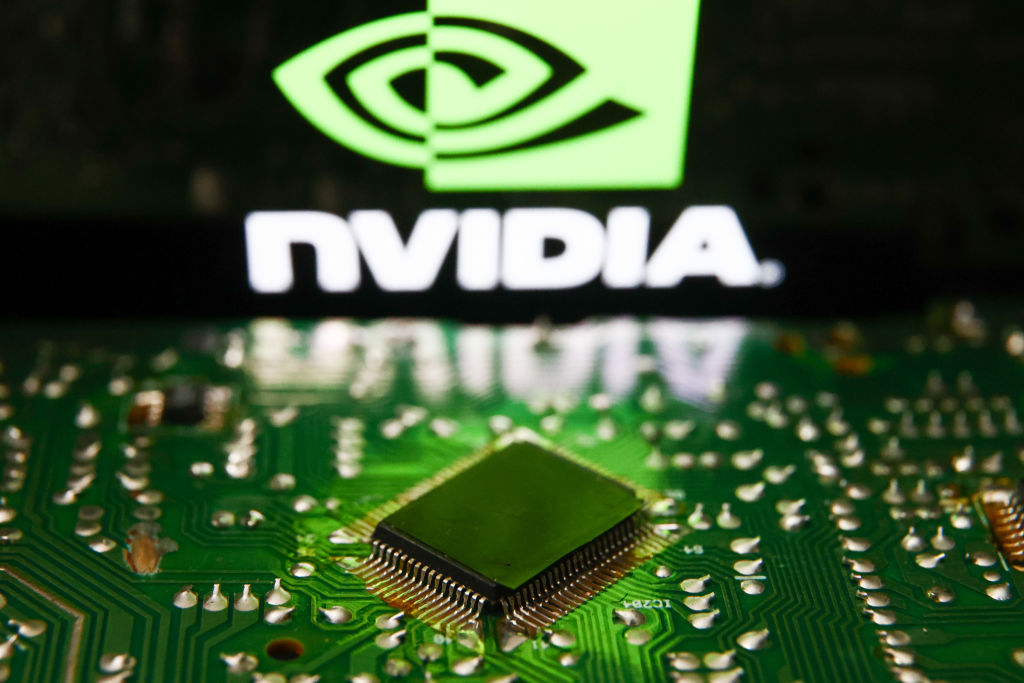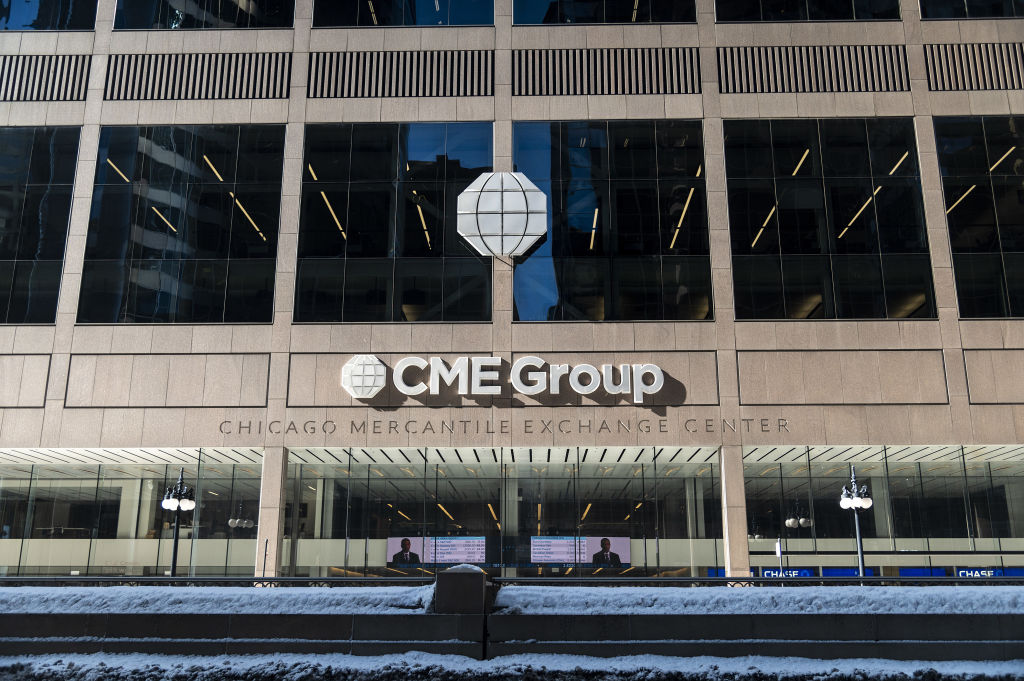Top 3 AI investments that could follow in Nvidia’s footsteps
We reveal how to find the next big thing in artificial intelligence and technology

Technology stocks continue to turbocharge US stock markets but with share prices soaring, where should you invest?
A big chunk of the best performers on the S&P 500 in the first six months of 2024 are connected to technology and artificial intelligence (AI), particularly the Magnificent 7.
It’s no secret that the talk of the town is Nvidia, which temporarily became the most valuable company in the world last month. Now worth around $3 trillion it has overtaken other tech giants including Apple and Microsoft.
MoneyWeek
Subscribe to MoneyWeek today and get your first six magazine issues absolutely FREE

Sign up to Money Morning
Don't miss the latest investment and personal finances news, market analysis, plus money-saving tips with our free twice-daily newsletter
Don't miss the latest investment and personal finances news, market analysis, plus money-saving tips with our free twice-daily newsletter
Lately Nvidia's share price has tumbled suggesting it may be overvalued though economists remain confident in AI as a long term bet.
Neil Shearing, group chief economist at Capital Economics highlighted that the large swings in the share price of Nvidia coincided with a growing number of analysts voicing scepticism about the ultimate economic benefits of AI.
He says: “History shows that it takes time for transformative new technologies to feed through to productivity gains. The fact that AI has not already led to improvements in economic growth is therefore not a surprise. We continue to believe these will materialise, but not until the second half of this decade.
“In the meantime, history also shows that investors typically try to capture the benefits of new technologies ahead of them crystallising in the real economy. To this end, we also think the asset bubble around AI has further to inflate – meaning even more upside for the S&P 500.”
Nvidia designs industry-leading graphic processing units which have become the backbone of AI. It’s a specialised processor which accelerates machine learning.
It has soared in popularity as a way to gain artificial intelligence (AI) exposure and investors continue to pile in. Nvidia retained its title as the most-bought stock last month (June) on the Interactive Investor platform.
Investors who have missed the Nvidia soar to celebrity might now be searching for the next rising star.
It’s not just about finding another company that does the same as Nvidia though - there are strong opportunities for investors looking ahead to those secondary and tertiary beneficiaries of the AI boom.
Jamie Mills O’Brien, investment director at abrdn, says: “While Nvidia may be the story of the day, we believe there are strong opportunities for investors looking ahead to those secondary and tertiary beneficiaries of the AI boom.
“After a long period of high correlations, and markets driven by a small number of stocks, we think that this concentration is dispersing, with technology leaders of the future likely to come from down the market cap spectrum and in markets other than the US.”
If Nvidia is not the only AI winner in town, who are the ones to watch?
SK Hynix
SK Hynix (S. Korea: KRX) is a South Korean memory chip specialist.
SK Hynix supplies Taiwan Semiconductor Manufacturing Company, the world's biggest chip producer, with the latest high-bandwidth memory (HBM) chips that are crucial for the graphics-processing units it makes on behalf of Nvidia.
HBM enhances AI computing by providing much faster data transfer speeds between memory and processors compared to traditional memory solutions.
This rapid data transfer is essential for AI applications that need to process vast volumes of data in real-time, such as machine learning, neural networks, and big data analytics. Applications like self-driving cars cannot suffer any time lags.
Storm Uru, manager of the Liontrust Global Technology fund, says: “SK Hynix has become the global leader in HBM for several reasons. It was the first to develop HBM technology in 2013, giving it a significant head start, and since then it has not rested on its laurels, developing a significant technological lead in the niche. SK Hynix now holds over 90% of the high-yield HBM3 market.”
Uru added that SK Hynix is best positioned to benefit from the next supply chain issue which is likely to be in HBM chips.
“The company has already seen significant growth, but its fundamentals are improving faster than its stock price, which is currently trading at 10 times forward P/E.
“SK Hynix is rushing to expand capacity to take advantage of this opportunity, but they are sold out for the next 18 months – making SK Hynix a fast follower to Nvidia and major beneficiary of the AI compute infrastructure buildout.”
Vertiv
Vertiv (NYSE: VRT) is an American infrastructure company which does many things that serve all-important data centres. AI cannot exist without data, which in turn needs to be stored - in a data centre.
Vertiv is in the business of designing, building and servicing critical infrastructure that enables vital applications for data centres.
One must-have for these centres is the means to keep temperatures low. Cooling is necessary for the efficient and reliable functioning of datacentres and there are companies across the globe starting to scale.
Vertiv has around 75% of revenues exposed to liquid cooling.
Jamie Mills O’Brien, investment director at abrdn, said: “The next generation of companies to benefit includes opportunities around data centres. In developed markets, Vertiv has the most direct exposure to the datacentre theme.”
Segro
A different approach to choosing a stock for the data centre play, would be to choose a UK Real Estate Investment Trust (REIT) which is involved in developing them.
Segro (LON: SGRO), a London-listed business, is an owner, asset manager and developer of modern warehousing and industrial property.
It has just been granted planning permission to build three data centres in Slough - which is Europe’s largest collection of data centres - two in the Slough Trading Estate and one in Iver. It’s estimated that almost half the data transferred around the world online will pass through the Slough estate.
Matt Norris, head of real estate securities at Gravis Advisory and manager of the Gravis Digital Infrastructure Income fund, says: “Nearly everything we do — streaming TV shows, emailing, google searches, online shopping — requires data centres. It’s easy to see that the world will need much more data centre space in the future.
“Segro is aiming to develop up to 24 new data centres with 17 in the UK and seven across Continental Europe, after raising £900 million in a share issue earlier this year.”
Long term investors stand to benefit from the rental income of these data centres.
Get the latest financial news, insights and expert analysis from our award-winning MoneyWeek team, to help you understand what really matters when it comes to your finances.
Holly Thomas is a freelance financial journalist covering personal finance and investments.
She has written for a number of papers, including The Times, The Sunday Times and the Daily Mail.
Previously she worked as deputy personal finance editor at The Sunday Times, Money Editor at the Daily/Sunday Express and also at Financial Times Business.
She has won Investment Freelance Journalist of the Year at the Aegon Asset Management Media Awards in November 2021.
-
 How to tap into AI energy stocks
How to tap into AI energy stocksOne certainty about generative AI is that it is hugely energy-intensive. Companies providing that power look set to capture the benefits.
-
 Will HMRC block money market funds from the stocks and shares ISA allowance?
Will HMRC block money market funds from the stocks and shares ISA allowance?Cautious investors looking for cash-like returns could be prohibited from using money market funds in a stocks and shares ISA under new ISA rules from HMRC. What could it mean for you?
-
 ChatGPT turns three: what’s next for the ‘AI era’?
ChatGPT turns three: what’s next for the ‘AI era’?Three years after its launch kickstarted the age of AI, ChatGPT and its maker OpenAI are driving the stock market. But concerns are growing over whether OpenAI will be able to turn its AI dominance into profit.
-
 Big Short investor Michael Burry closes hedge fund Scion Capital
Big Short investor Michael Burry closes hedge fund Scion CapitalProfile Michael Burry rightly bet against the US mortgage market before the 2008 crisis. Now he is worried about the AI boom
-
 The global defence boom has moved beyond Europe – here’s how to profit
The global defence boom has moved beyond Europe – here’s how to profitOpinion Tom Bailey, head of research for the Future of Defence Indo-Pac ex-China UCITS ETF, picks three defence stocks where he'd put his money
-
 New frontiers: the future of cybersecurity and how to invest
New frontiers: the future of cybersecurity and how to investMatthew Partridge reviews the key trends in the cybersecurity sector and how to profit
-
 Canada will be a winner in this new era of deglobalisation and populism
Canada will be a winner in this new era of deglobalisation and populismGreg Eckel, portfolio manager at Canadian General Investments, selects three Canadian stocks
-
 Jim O’Neill on nearly 25 years of the BRICS
Jim O’Neill on nearly 25 years of the BRICSJim O’Neill, who coined the acronym BRICS in 2001, tells MoneyWeek how the group is progressing
-
 Nvidia earnings beats expectations
Nvidia earnings beats expectationsNvidia’s earnings beat has reassured the market about the strength of demand for AI infrastructure
-
 Profit from other investors’ trades with CME Group
Profit from other investors’ trades with CME GroupCME Group is one of the world’s largest exchanges, which gives it a significant competitive advantage